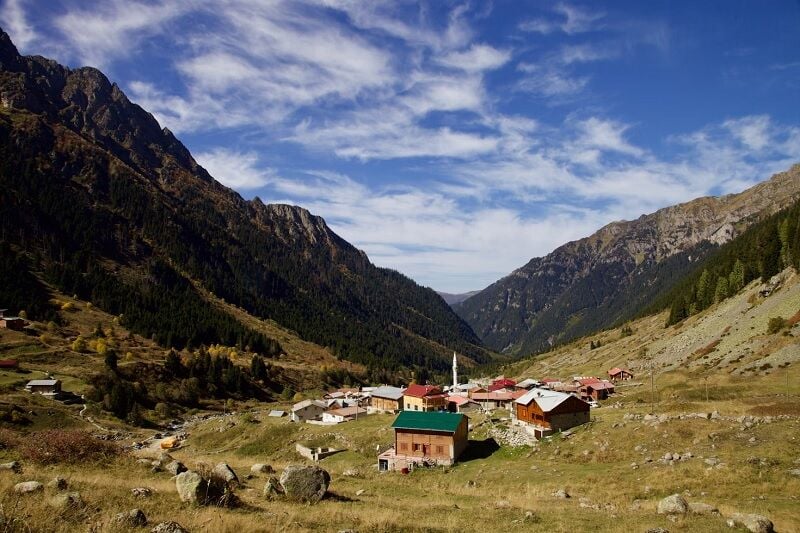The wild journey of cannabis worldwide

Cannabis has woven its way through human history for thousands of years, far beyond the reach of modern cannabis laws. Its journey from ancient cultivation to today’s legal battles reveals a complex tapestry of cultural, political, and economic influences. Imagine, for a moment, families gathering in fields across the globe, harvesting hemp without a hint of the controversy that would engulf their cherished plant centuries later.
The story of cannabis stretches back to the dawn of civilization, its uses are as diverse as the societies that cherished it. From the Neolithic farmers who first discovered its durable fibers to the global powers that sought to control its spread, cannabis has played a pivotal role in shaping our world. As you delve into the world history of cannabis, you’ll uncover a saga of human innovation, restriction, and resurgence—a testament to the plant’s enduring appeal and versatility.
It all started in Central Asia

Cannabis, a plant with a legacy reaching back thousands of years, initially sprouted in the heart of Central Asia. Its journey from a natural herb to a globally recognized substance covers continents, cultures, and centuries.
How “cannabis” became a thing in Thailand
Your exploration into cannabis’s past takes a fascinating turn towards Thailand, where “cannabis” roots itself deeply into the culture. Locals didn’t stumble upon this plant by accident; its introduction was the result of meticulous selection and cultivation. Early adopters recognized its versatility, using it both for its fibrous qualities in ropes and textiles and for its medicinal properties. It’s crucial you know, the term “cannabis” didn’t just appear. It’s a testament to the deep-seated cultural integration of cannabis in Thailand, borrowed from ancient languages and enduring through generations.
The arrival of cannabis in Thailand marks a significant chapter in the world history of cannabis. As traders and travelers traversed the Silk Road, they carried with them not just goods, but also knowledge, including the cultivation and uses of cannabis. Thailand, with its rich soil and favorable climate, proved to be an ideal environment for this plant. Farmers quickly adopted cannabis, integrating it into their agricultural practices and daily lives. This wasn’t a mere coincidence; it was a pivotal moment that shaped Thailand’s agricultural and cultural landscape.
Cannabis in the 60’s and onwards
The 1960s heralded a global shift in the perception of cannabis, with Thailand as no exception. However, here’s where it gets interesting. Rather than remaining a substance used quietly among locals, cannabis became a symbol of rebellion and liberation worldwide. In Thailand, this era wasn’t just about adopting a Western trend; it was also about reinstating a crucial part of their heritage. The plant’s use expanded beyond traditional medicine and textiles, embracing the euphoric effects that caught the world’s attention during the counterculture revolution.
Your journey through the history of cannabis reveals not just its versatility and appeal but also its ability to adapt and thrive across diverse cultures. From the ancient pastures of Central Asia to the vibrant fields of Thailand, cannabis has woven itself into the fabric of human history. As you delve deeper into its story, remember, that it’s more than just a plant; it’s a global legacy.
Cannabis sets foot in Europe
You’ll find it fascinating how cannabis, initially thriving in Central Asia, found its way to Europe. Nomads, traders, and conquerors didn’t just carry goods or treasures; they brought with them the seeds of cannabis, unknowingly sowing the roots of future cultures and economies.
As cannabis plants took root in European soil, they metamorphosed from mere botanical specimens into pivotal agricultural assets. Hemp, a variety of cannabis, became a cornerstone for industries, lending its fibers to ropes, sails, and textiles. This wasn’t an overnight success but a slow cultivation, both literally and metaphorically, that burgeoned into an indispensable part of European life.
Seeds of economy and culture
The economic wheel turned significantly with hemp’s integration into daily and industrial life. Being fast-growing and easy to cultivate, hemp represented not just a crop but a resource that spurred on colonial ventures and even legal mandates.
For instance, in the 1600s, European colonies, recognizing hemp’s value, began mandating its cultivation. This move wasn’t purely economic; it was strategic, securing a place for hemp in the annals of agricultural history and ensuring its proliferation across the New World.
Yet, it’s not just about the material. The low levels of THC in these early plants tell you that the initial uses were far from recreational. Instead, hemp played a pivotal role in the medicinal practices of the times, a testament to the versatility and breadth of cannabis’s applications.
Moving past the utilitarian, cannabis began its cultural infiltration. As its uses diversified beyond the functional, it started to take on more social and ritualistic roles. This shift wasn’t abrupt but a testament to the plant’s ability to integrate deeply into the fabric of societies.
The first golden age of medical cannabis
You’re stepping into a time when medical cannabis flourished. Think back to the late 19th and early 20th centuries. Scientists and doctors widely acknowledged cannabis’s therapeutic potential, exploring its numerous health benefits. This period marked a significant chapter in history, showcasing an early recognition of cannabis’s medicinal value.
From the earliest dawn of history
From the very beginning, humanity has had a connection with cannabis. It’s not just a modern fascination. Historical texts and archaeological evidence point to its use thousands of years ago. Cultures around the globe valued cannabis for more than its psychoactive effects; they recognized its versatility. From textiles to medicine, cannabis carved its niche in the tapestry of an ancient civilization.
Early cannabis use
Description
As you delve into the annals of history, it’s clear that humans have intertwined their lives with cannabis for millennia. This journey begins in the steppes of Central Asia, the birthplace of this versatile plant.
Nomadic transmissions
Nomads, the original globe-trotters, played a pivotal role in spreading cannabis seeds across continents. Their relentless wanderlust and tradecraft activities ensured that cannabis found new soils to flourish in, far from its Central Asian cradle.
A titan of agriculture
Here’s a fact that might surprise you: hemp, a cannabis variant, was not just another plant. It was an agricultural titan. In European societies, hemp’s fiber was indispensable. It crafted the strongest ropes, the sails that took explorers across oceans, and durable textiles that clothed the masses.
Mandatory cultivation
The economic significance of hemp was so prominent that European colonies mandated its cultivation. This directive wasn’t mere policy; it was a necessity that shaped the very fabric of the colonial economy and expansion.
Social and ritualistic roles
Beyond its tangible benefits, cannabis also assumed significant social and ritualistic roles in various societies. Its use in ceremonies and social gatherings highlights its integral presence in the cultural tapestry of many communities.
This exploration into the early use of cannabis reveals a history rich with diversity in its application and significance across different spheres of human life.
Global spread

The journey of cannabis didn’t stop at the high seas; it reached the New World with the colonists. Its utility was so recognized that growing hemp became a legal requirement in some territories. This era demonstrated the adaptability of cannabis, thriving in varying environments and becoming integral to the fabric of societies across the world.
The medicinal benefits of cannabis, known for centuries in Asia, finally caught the West’s attention. Studies and research into its therapeutic potential began to emerge, revolutionizing the way the modern world viewed cannabis. From a mere agricultural commodity, it transformed into a subject of scientific intrigue.
Cannabis’s global journey is a testament to its resilience and intrinsic value to humans. From ancient fields in Asia to modern laboratories, it has played multiple roles – as a staple crop, a medicinal plant, and a subject of legal and social debates. Its journey through time and across continents is far from over, with new chapters yet to be written in its long history.
Liberalizing and legalizing
The transition from prohibition to acceptance didn’t happen overnight. It was the result of long, hard-fought battles by activists, patients, and forward-thinking policymakers. Countries like the Netherlands paved the way, offering a glimpse into a regulated, safer cannabis market. Decriminalization in certain areas allowed researchers and medical professionals to explore cannabis’s therapeutic potential without the looming threat of legal ramifications.
As you delve deeper, you’ll learn about significant milestones, marking the path toward liberalization. One notable turning point was the global recognition of medical cannabis, acknowledging its potential in treating a variety of conditions. This period saw a surge in scientific research, providing the evidence needed to push through legislative changes.
The conversation around cannabis has certainly evolved. Today, numerous countries have taken bold steps to legalize, not just medical, but also recreational cannabis. This move towards a regulated cannabis industry aims to curb illegal trade, ensure product safety, and open up new economic opportunities.
Also, learn the art of cannabis cultivation, It consists of a complete guide on how cultivating cannabis is done you will surely find this informative and will have a greater insight into do’s and don’ts.
Latest Thailand News
Follow The Thaiger on Google News:


























